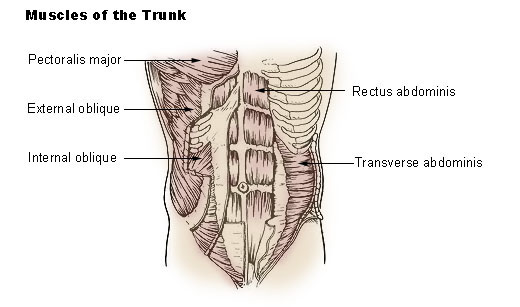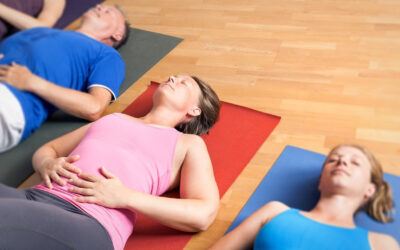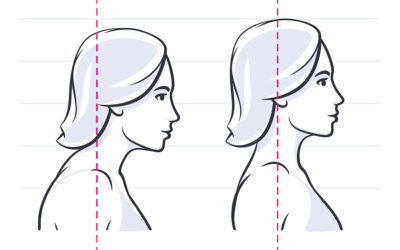Have you ever wondered what your abdominal muscles actually do? Most of us are concerned with the look and strength of our abs. But what is their purpose? If you read anatomy books, most list actions such as flexing the lumbar spine to bring the chest towards the pelvis, performing side bends, rotating the trunk, and compressing abdominal contents. And yes, these are all true! However, there is a much more important role the abs play in the body that most anatomy books overlook. What is it? Breathing!
Let me explain. The abdominal muscles include the internal and external obliques along with the transversus abdominis. These are the primary muscles of forced expiration. (Read: breathing out.) In other words, the only time these muscles activate are during forced expiration. Elastic recoil of the lung tissue causes normal expiration.
Let me elaborate. All of the abdominal muscles attach to the ribs. So, during forced expiration, the abdominal muscles help to expel air from the lungs by pulling the ribs in towards the center of the body and down toward the pelvis. If you envision a squeezing sponge, you can get a clearer picture of what’s happening. The abdominals help to squeeze the spongy tissues of the lungs in order to remove the air.
Unfortunately, many of us do not breathe correctly. Instead, we fail to use our lower lungs and abdominals. As a result, air only gets exchanged in the upper area of the lungs. This leaves us with residual air in the lower part of the system. The excess air then wreaks havoc on our posture and performance.
Align Your Deep Core with Proper Exhalation
When we don’t use our abs to exhale, we don’t pull our ribs down and inward. Instead, we leave them flared out. In other words, we are stuck in respiration’s inhalation phase. This causes a negative chain reaction up and down the body, from tight hips to forward shoulders.
When correcting posture, I approach the body from the inside out and from the center to the extremities. In the past, I have given primary attention to alignment of the shoulders in relation to the pelvis. However, using this view, I was ignoring the position of the rib cage in between. Bad mistake! The rib cage is actually very important. It wraps from the back to the front of the body, surrounds the lungs, attaches to the abdominals and encompasses the diaphragm. Thus, it is essential! It is in constant motion. And, it affects the tension and position of several muscles. Why? Because we have a life-sustaining need to breathe.
Do me a favor. As you sit there reading this article, relax and tune in to your body. What do you observe? Your breath, of course! Notice the continuous rhythm of air flowing in and out of your body. This simple but constant movement widely impacts your musculoskeletal system. And the way that you do it that can either help or harm.

Now, notice your position. If you look at the picture on the left, you can see ideal alignment. In other words, your rib cage stacks directly on top of the pelvis. If you think of your rib cage as a bell, you want the clapper (the part that rings the bell) hanging straight down. Pay attention to how this gives the body its normal spinal curves.
When we don’t fully exhale and engage the abs, our bell is rung up and the clapper swings forward, as seen in the photo to the right. Notice how the chest and ribs lift up and away from the spine. And, the pelvis is positioned behind them in a forward tilt.

This is the chain reaction I was referring to above. When your bell is not aligned, it has a negative effect that extends up and down the body. Below, the pelvis is forced into an anterior tilt, the lower back increases its arch, and the hips become restricted. Above, the shoulders are pushed back, losing their alignment with the pelvis. Also, the neck becomes overextended. Finally, the surrounding upper body muscles are overstressed since you have to work harder to hold the eyes level with the horizon. In this “bell rung up” position, the shoulders can also become limited in their range of motion. And, often, the left shoulder is elevated higher than the right.
Unfortunately, misalignment of this deep core can lead to many dysfunctions and compensations in the lower back, hips and shoulders, which can then be propagated all the way down to the feet or up to the head. You might recall my blog: My Low Back Hurts Because I Can’t Breathe!
To sum it up
The abdominals assist with forced exhalation. When properly activated, they help to align your deep core – rib cage and pelvis – which can reduce many common musculoskeletal pains and injuries. Now, please understand: I’m not suggesting you forcefully exhale all the time. Obviously, that would be exhausting! However, if you don’t train your abs to do this movement and become strong in an aligned deep core posture, you may suffer.
So, how do you learn to engage your abs on exhale and align your deep core? Watch for exercises in my next blog...


